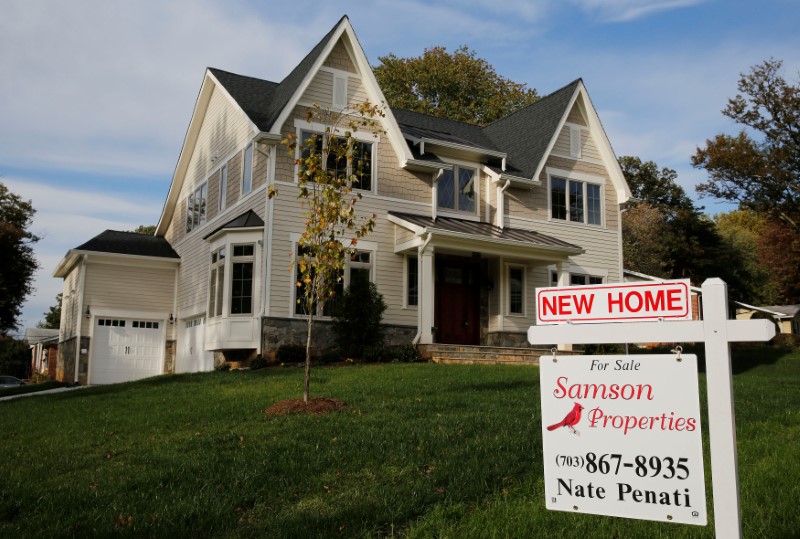
FILE PHOTO: A real estate sign advertising a new home for sale is pictured in Vienna, Virginia, U.S. October 20, 2014. REUTERS/Larry Downing/File Photo
February 26, 2018
By Lucia Mutikani
WASHINGTON (Reuters) – Sales of new U.S. single-family homes fell for a second straight month in January, weighed down by steep declines in the Northeast and South, which could raise concerns the housing market is slowing down.
The weak report from the Commerce Department on Monday came on the heels of data last week showing sales of previously owned homes dropped for a second consecutive month in January amid near record low housing inventory. A severe shortage of houses, especially on the lower end of the market, is pushing up prices and sidelining some first-time buyers.
The Commerce Department said new home sales dropped 7.8 percent to a seasonally adjusted annual rate of 593,000 units last month, the lowest level since August 2017. Economists polled by Reuters had forecast new home sales, which account for nearly 10 percent of the housing market, rising to a pace of 645,000 units last month.
Sales tumbled 33.3 percent in the Northeast and plunged 14.2 percent in the South, which accounts for half of the new housing market. They rose 1.0 percent in the West and surged 15.4 percent in the Midwest.
New home sales are drawn from permits and tend to be volatile on a month-to-month basis. They fell 1.0 percent from a year ago. Two-thirds of homes sold last month were under construction or yet to be built.
The PHLX housing index <.HGX> was trading lower, bucking a broadly firmer U.S. stock market. Prices of U.S. Treasuries were higher while the dollar <.DXY> was slightly stronger against a basket of currencies.
Rising mortgage rates could make buying a home even more expensive, especially if wage growth does not accelerate. Annual wage growth has been stuck below 3 percent, despite the unemployment rate having dropped to a 17-year low of 4.1 percent.
The 30-year fixed mortgage rate rose to an average of 4.40 percent in the week ended Feb. 22, the highest level since April 2014, from 4.38 percent in the prior week, according to mortgage finance agency Freddie Mac. It has increased for seven straight weeks. Mortgage rates are increasing in tandem with U.S. government bond yields on worries about rising inflation.
In January, there were 301,000 new homes on the market, an increase of 2.4 percent and the highest level since March 2009. The stock of new homes still remains well below its peak during the housing market bubble in 2006.
Unless builders shift toward cheaper homes, the increase in inventory will probably do little to ease the supply crunch. Houses under construction accounted for 59 percent of inventory last month.
At January’s sales pace it would take 6.1 months to clear the supply of houses on the market, the most since July 2014 and up from 5.5 months in December. A supply of six to seven months is viewed as a healthy balance between supply and demand.
The median price for a new home increased 2.5 percent in January to $323,000 from a year ago.
(Reporting by Lucia Mutikani; Editing by Paul Simao)

